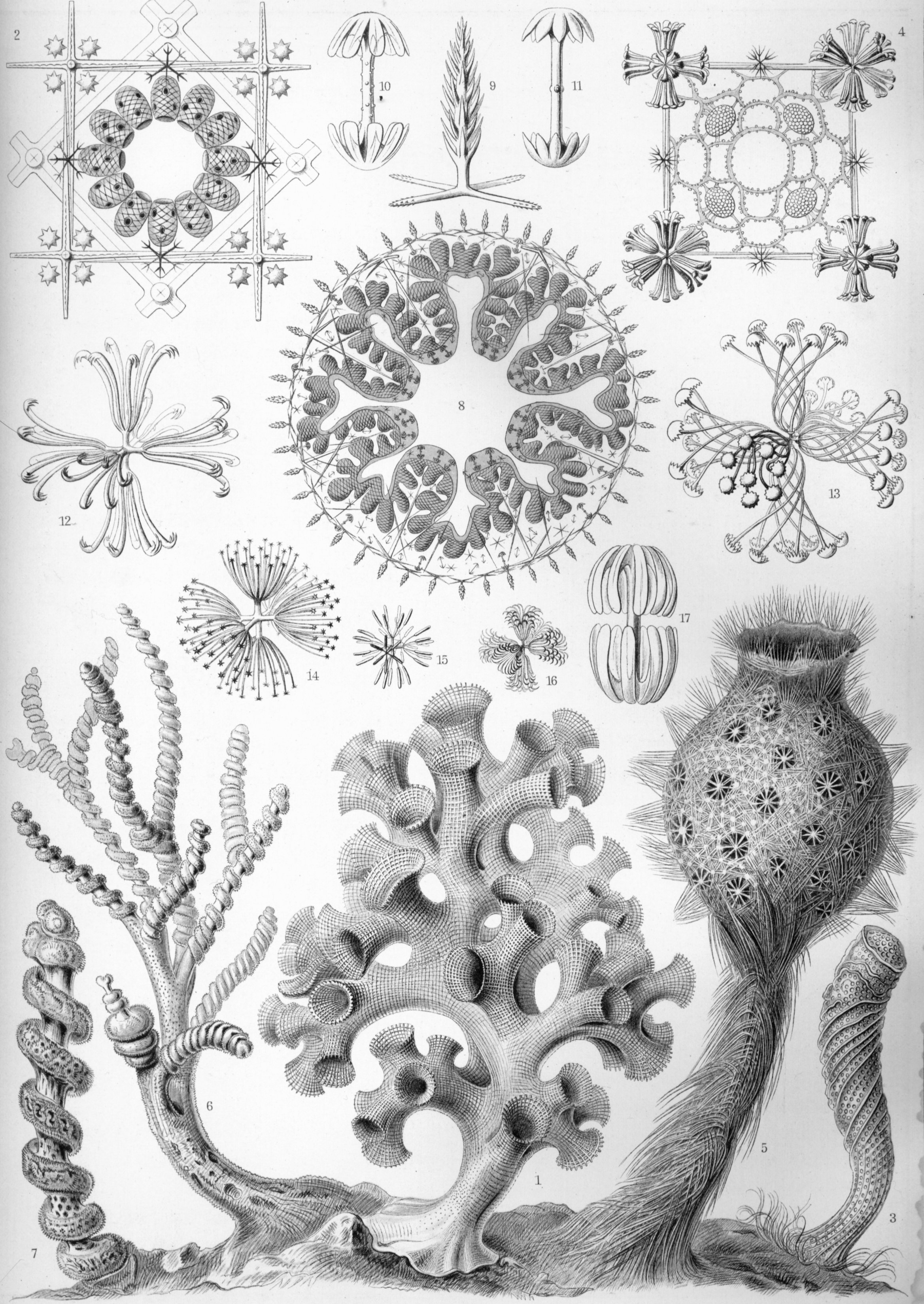- Hexactinellid
image_caption = "Hexactinellae" fromErnst Haeckel 's "Kunstformen der Natur ", 1904
name = Hexactinellid sponges
regnum =Animal ia
phylum =Porifera
classis = Hexactinellida
classis_authority = Schmidt, 1870
subdivision_ranks = Subclasses
subdivision =
*Amphidiscophora
*Hexasterophora Hexactinellid sponges are sponges with a
skeleton made of four- and/or six-pointed silaceousspicules , often referred to as glass sponges.Overview
They are usually classified in the Class Hexactinellida along with other sponges in the phylum
Porifera , but some researchers consider them sufficiently distinct to deserve their own phylum, Symplasma.Hexactinellids are relatively uncommon and are mostly found at substantial depths, although the species Oopsacas minuta has been found in shallow water. There are big differences between hexactinellids and other sponges. They are often cup-shaped animals with sturdy internal skeletons made up of fused spicules. Much of their body tissues are
syncitia , extensive regions ofmultinucleate cytoplasm . They are fairly common relative toDemosponges as fossils, but this is thought to be, at least in part, because their spicules are sturdier thanspongin and fossilize better. Unlike other sponges, they do not possess the ability to contract.One ability they do possess is a unique system for rapidly conducting electrical impulses across their bodies, making it possible for them to respond quickly to external stimuli. Hexactinellids like "
Venus' Flower Basket " have a tuft of fibres that extends outward like an inverted crown at the base of their skeleton. These fibres are between 50 and 175 mm long and about the thickness of a human hair. They work as optical fibres that are surprisingly similar to those used in modern telecommunication networks and could even be more handy than the artificial versions. The biological fibres of the sponge conduct light beautifully when they are illuminated, and use the same optical principles that modern engineers use to design industrial fibre optics.Despite not having the ultra-high transparency needed for telecommunication networks, they do have other advantages; unlike commercial fibre, it is possible to tie them in tight knots without them cracking or breaking. Another advantage is the fact that these biological fibres are produced by chemical deposition at the temperature of seawater. For the moment,
human fibre optics can only be produced with a high-temperature furnace and expensive equipment. The earliest known hexactinellids are from the earliestCambrian or lateNeoproterozoic .These creatures also have the longest lifespans of all creatures (up to 15.000 years) according to AnAge Database. [ [http://genomics.senescence.info/species/query.php?show=1&sort=4&page=1 Search the AnAge Database ] ]
The sponges form reefs off the coast of
British Columbia and Washington State [ [http://seattlepi.nwsource.com/local/325489_sponge28.html Reef of glass sponges found off Washington's coast ] ] , which are studied in theSponge Reef Project .References
Wikimedia Foundation. 2010.

